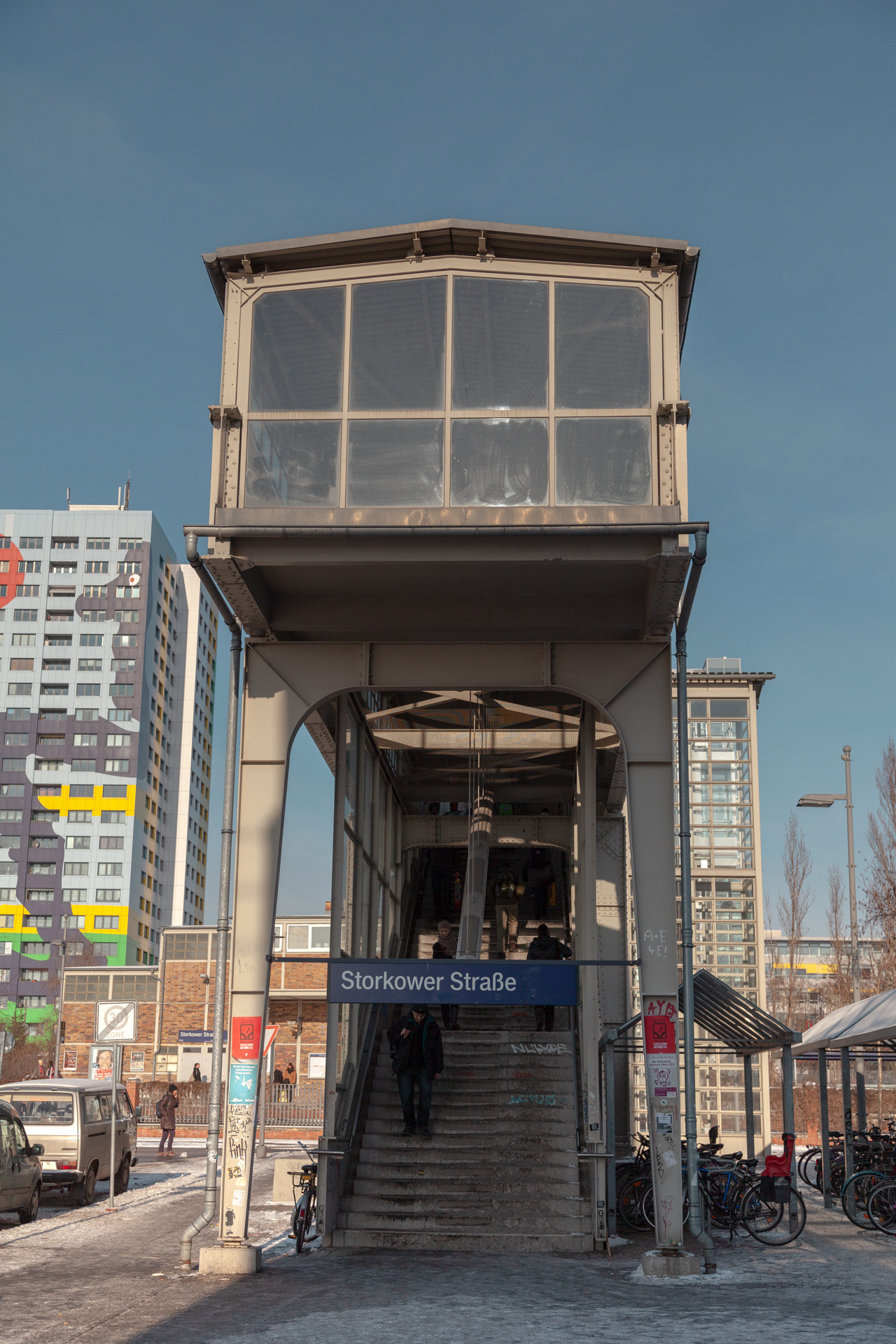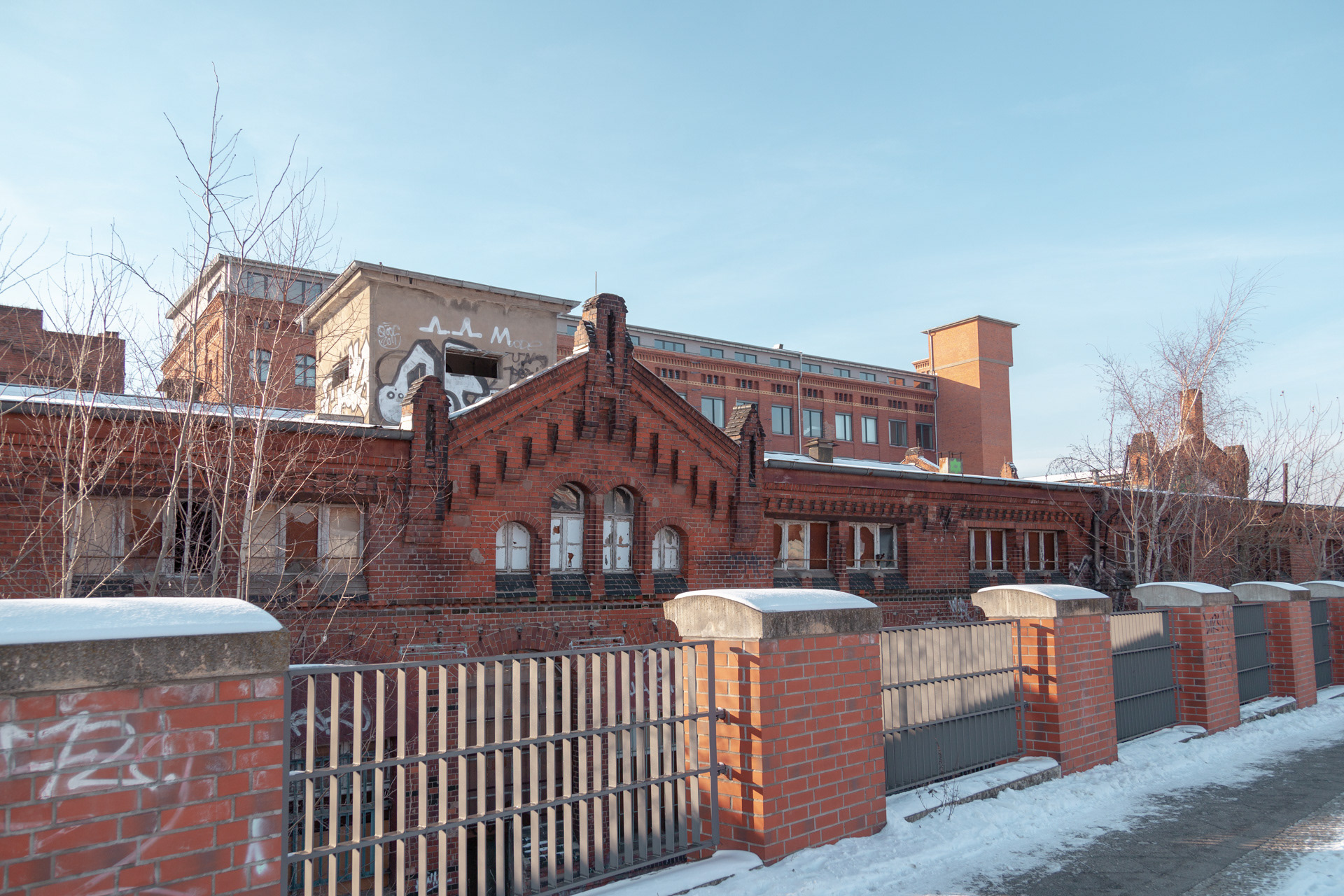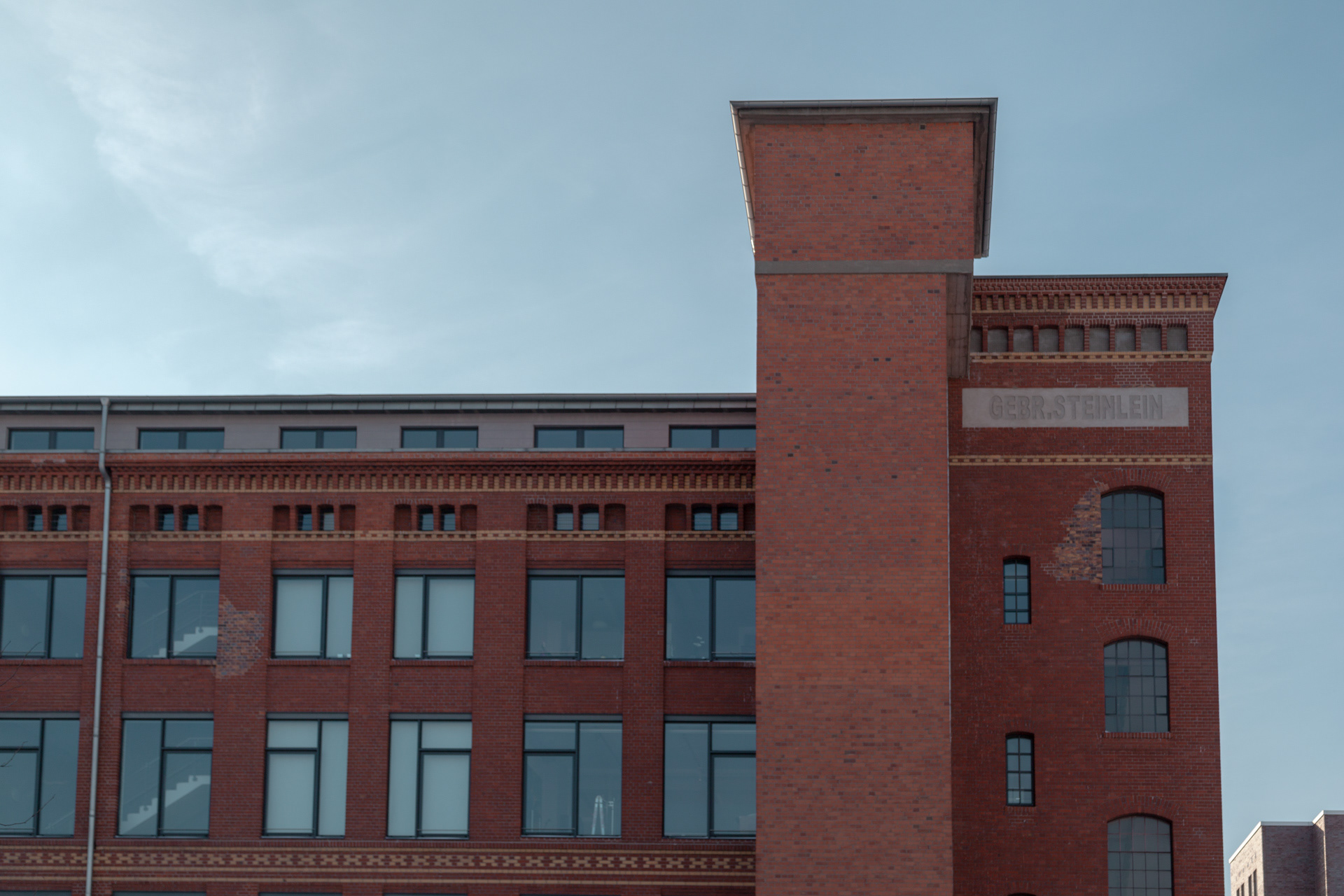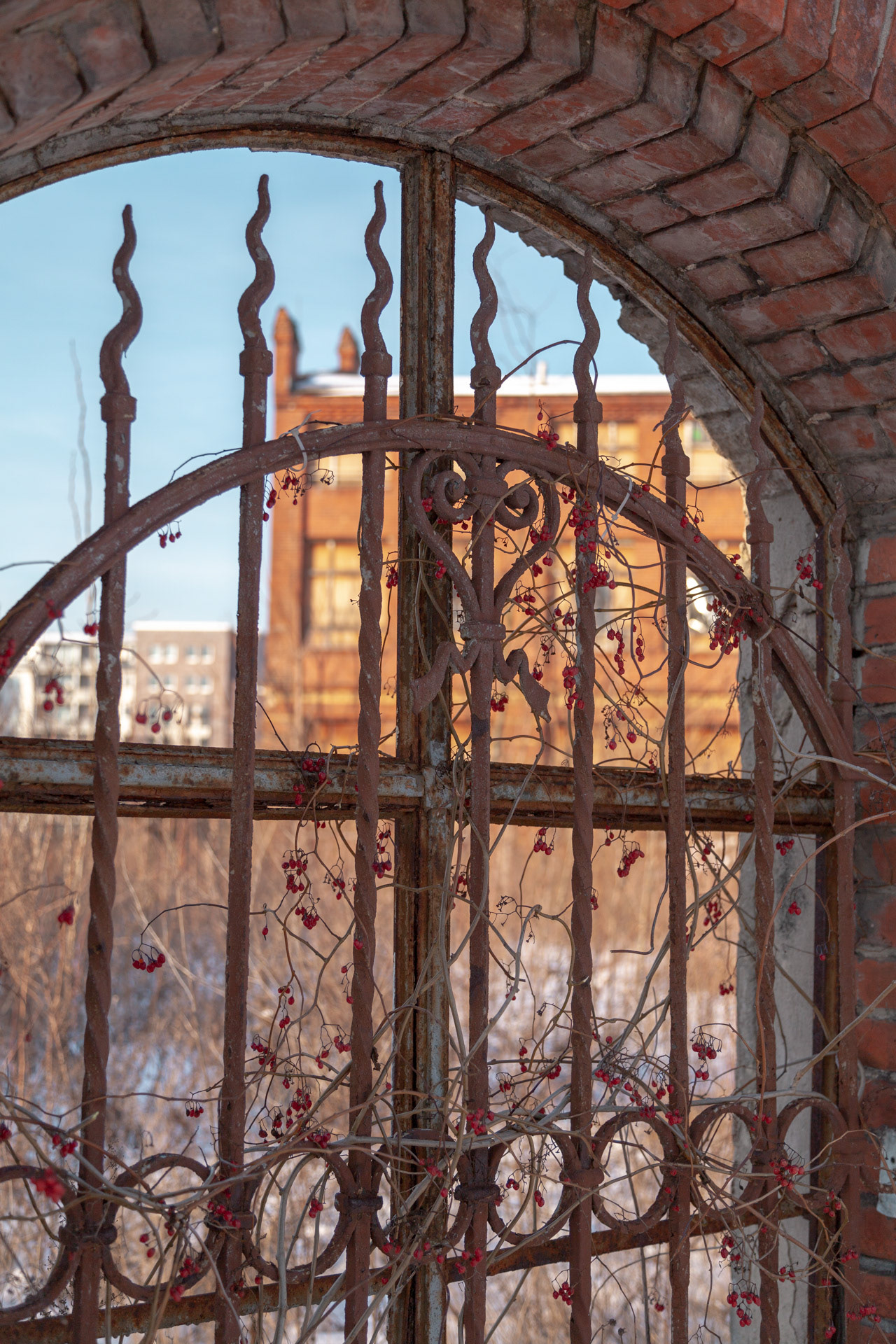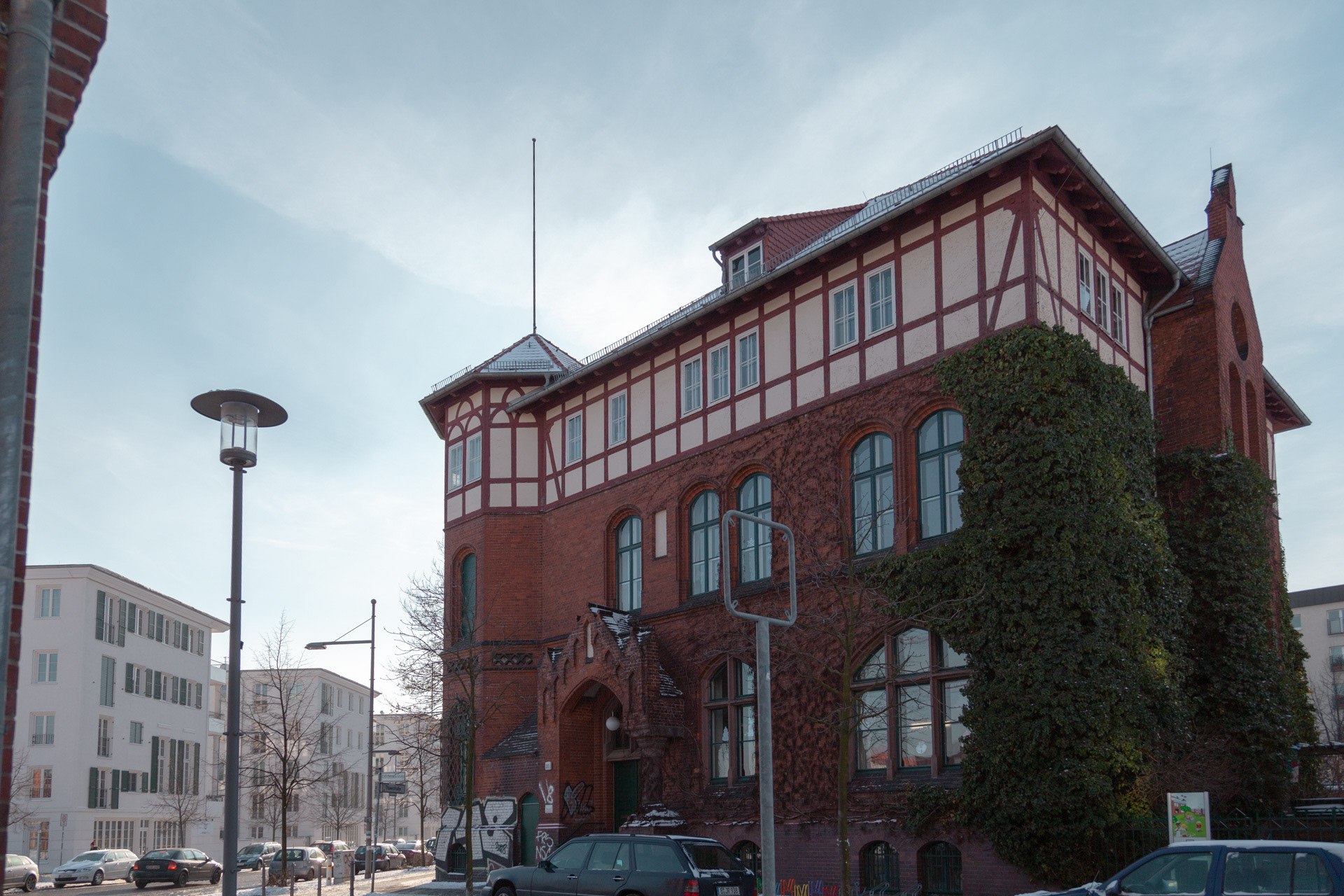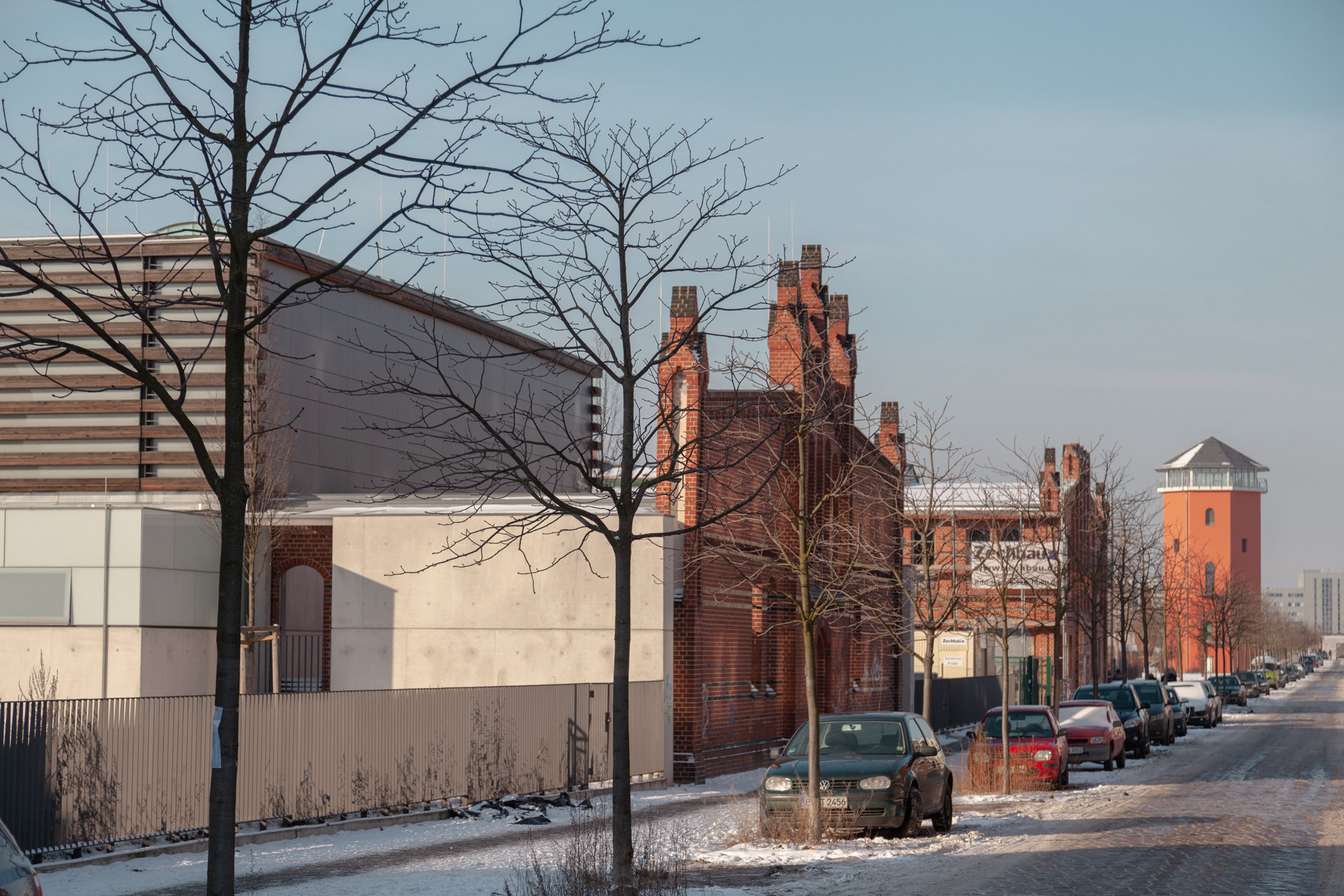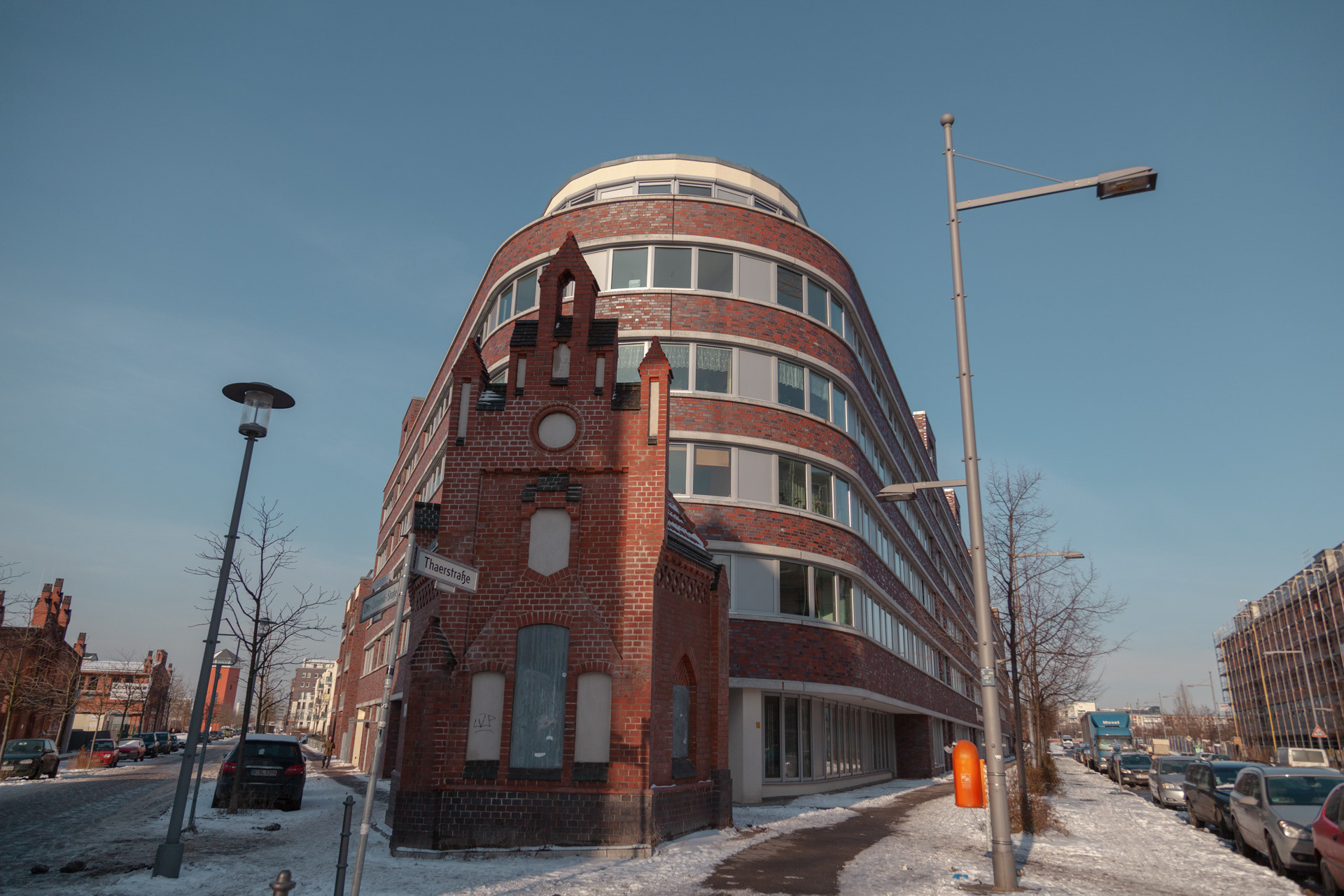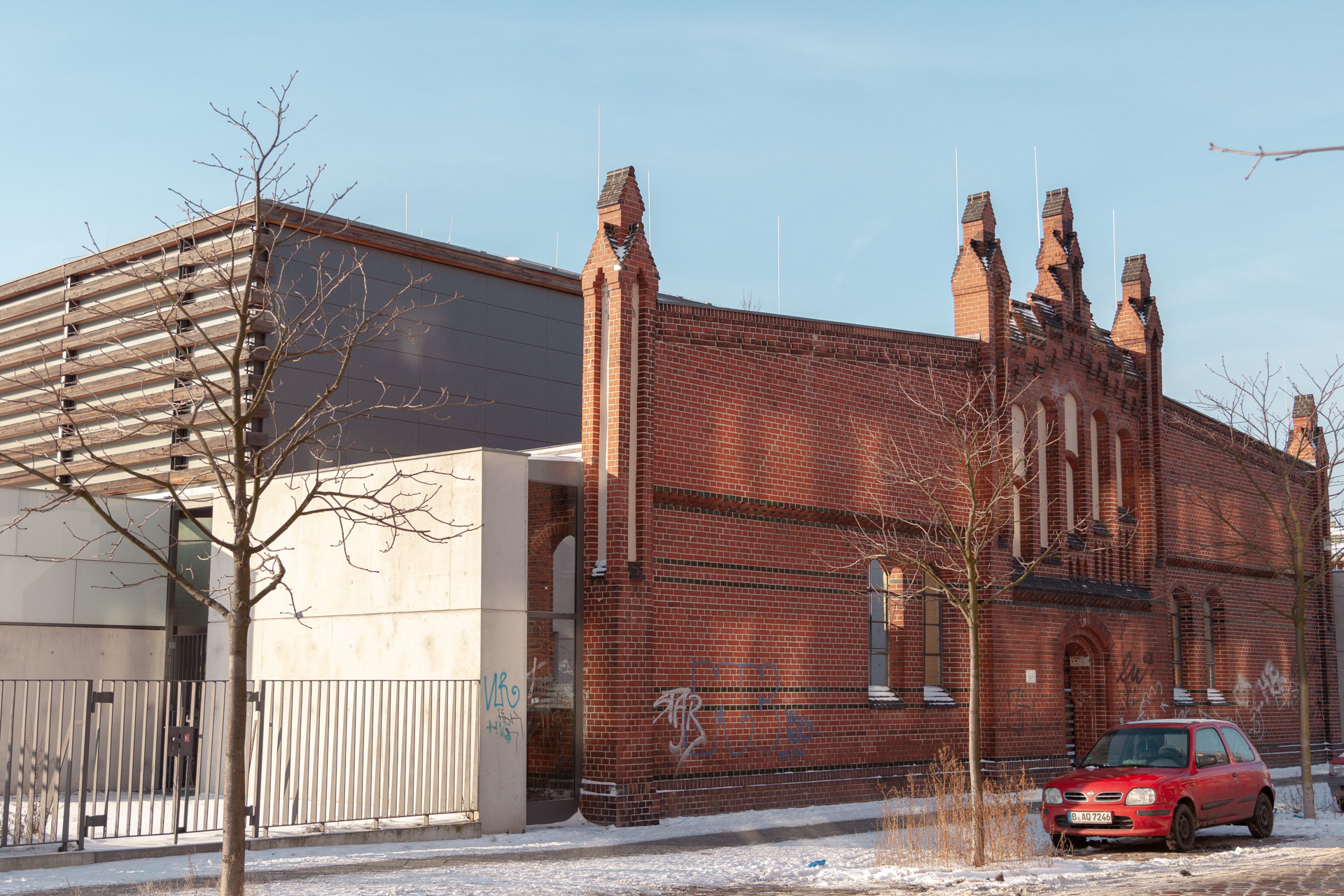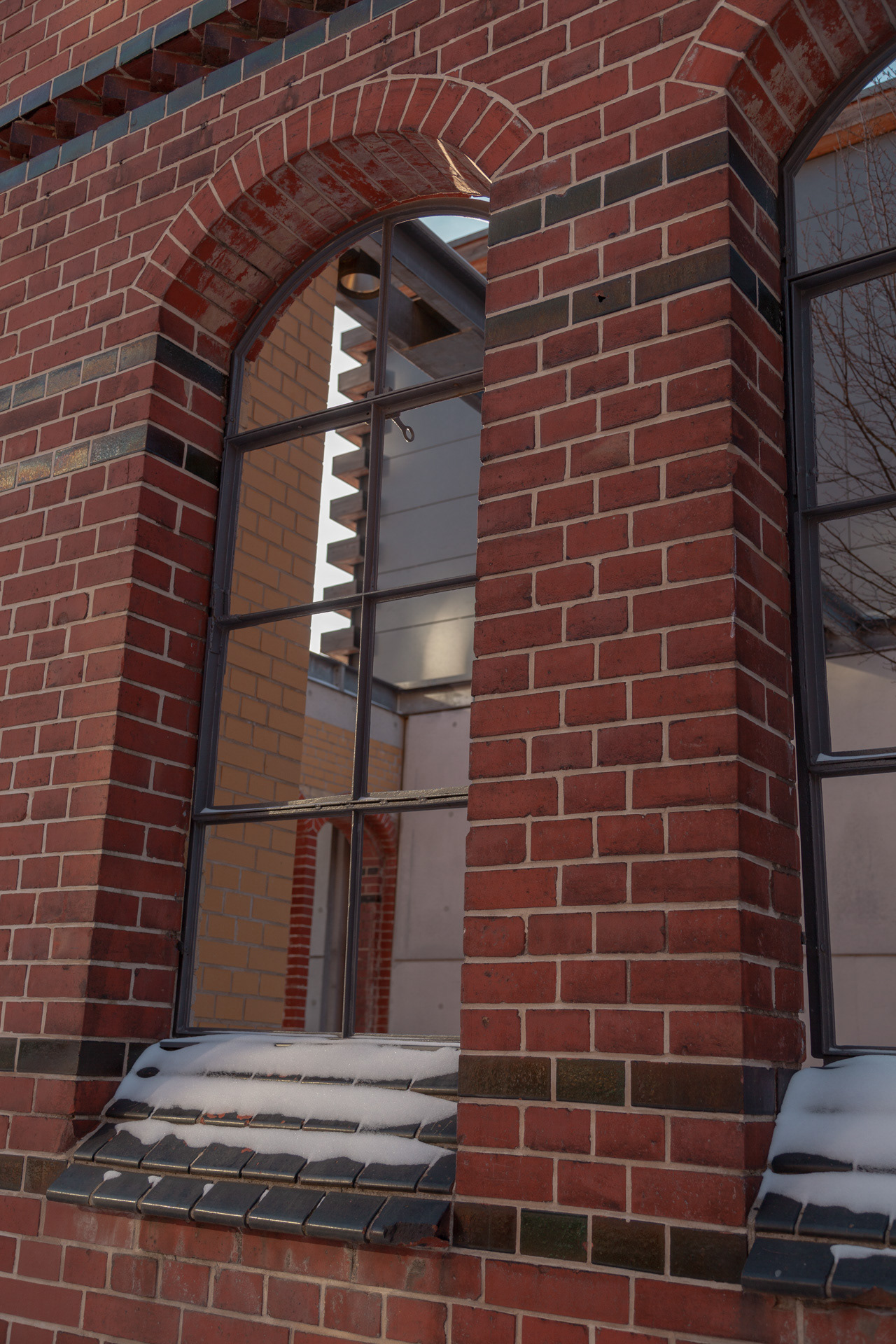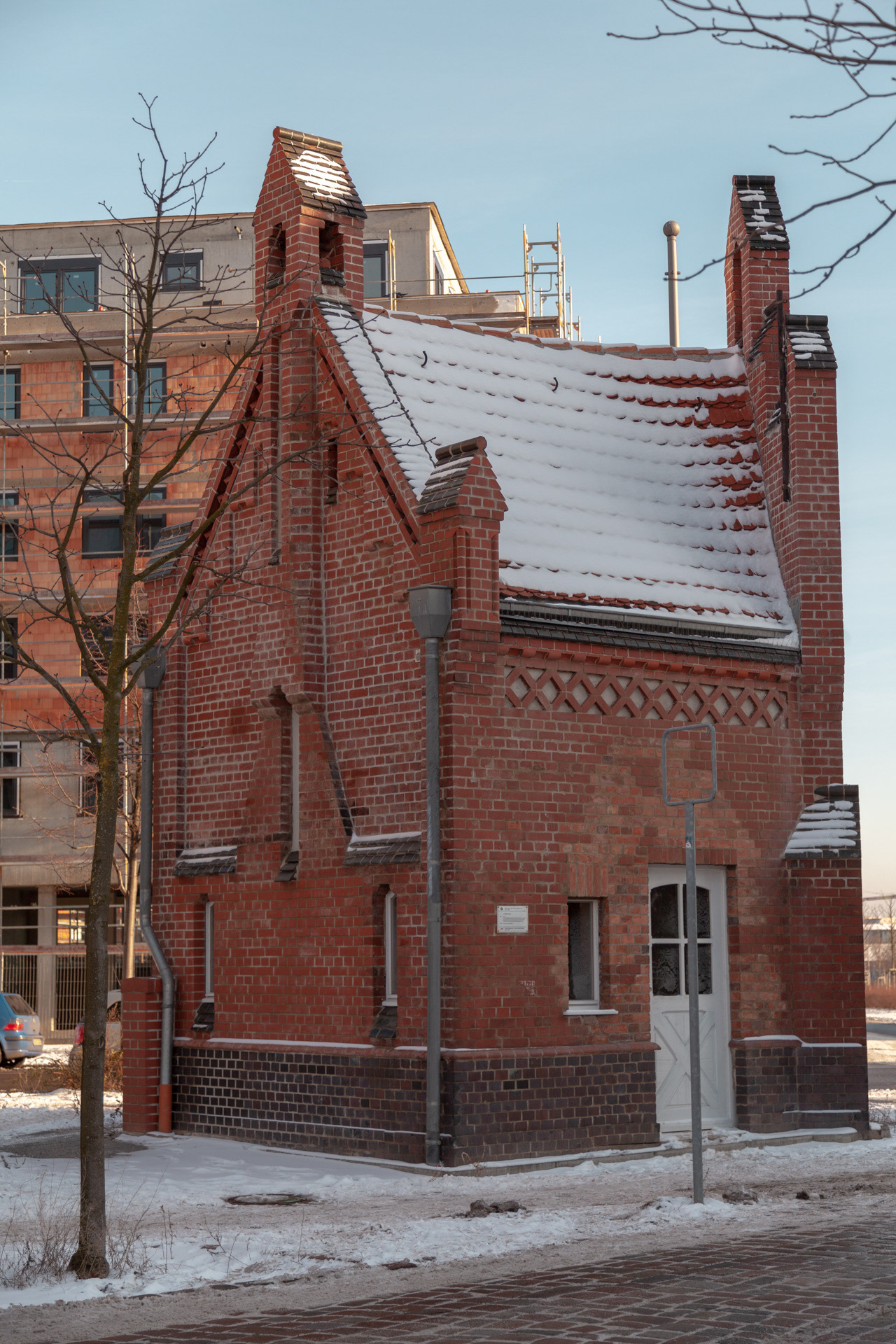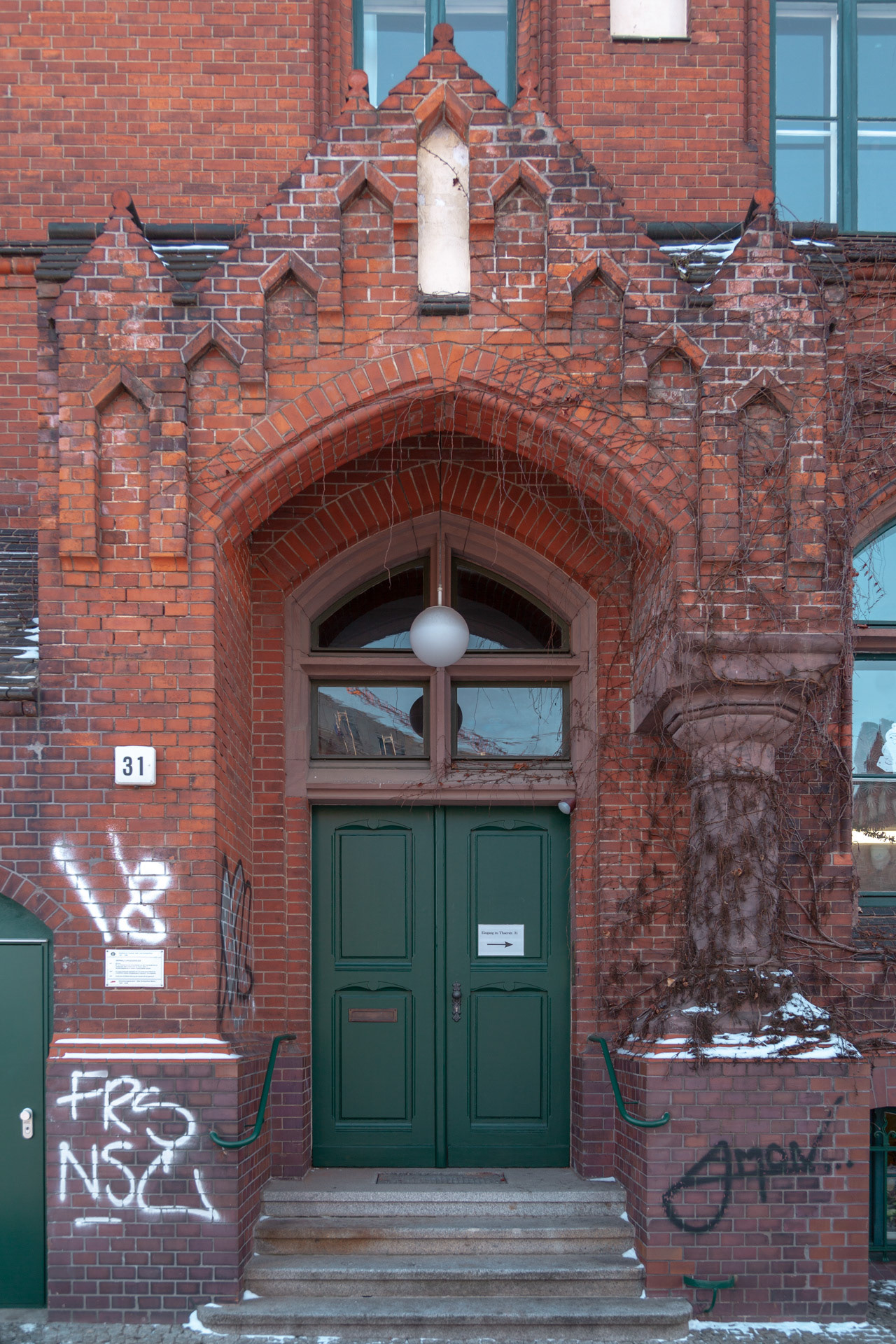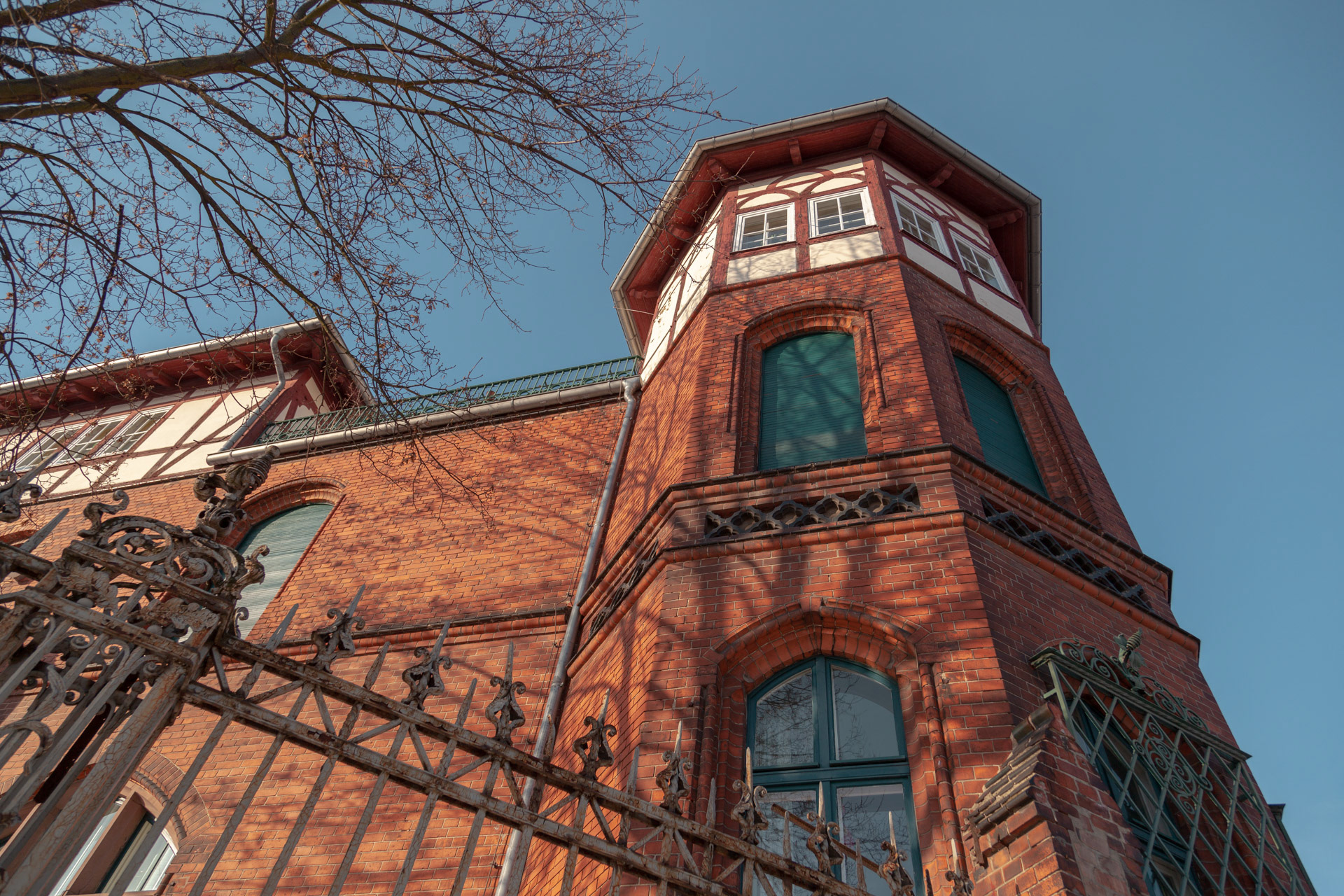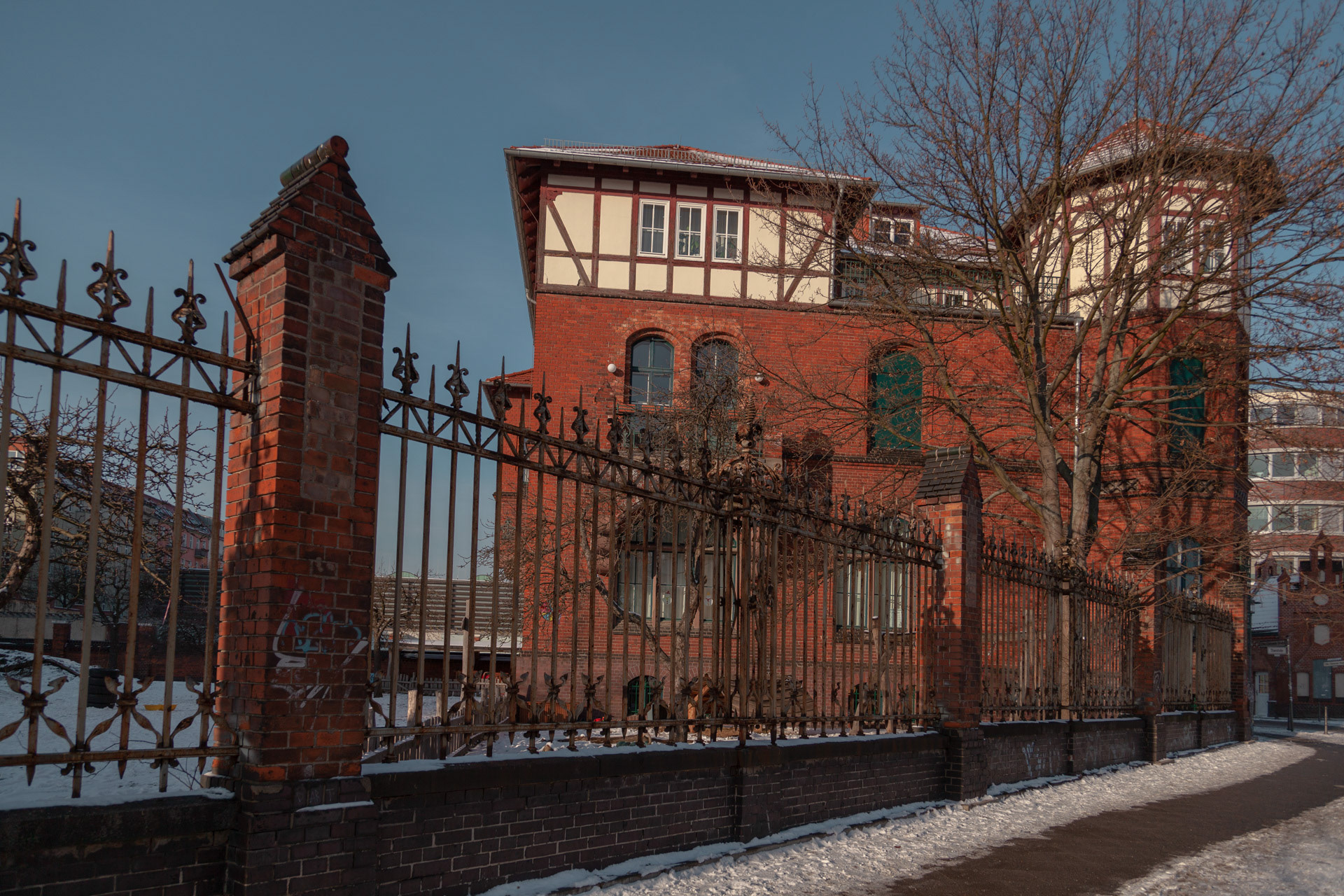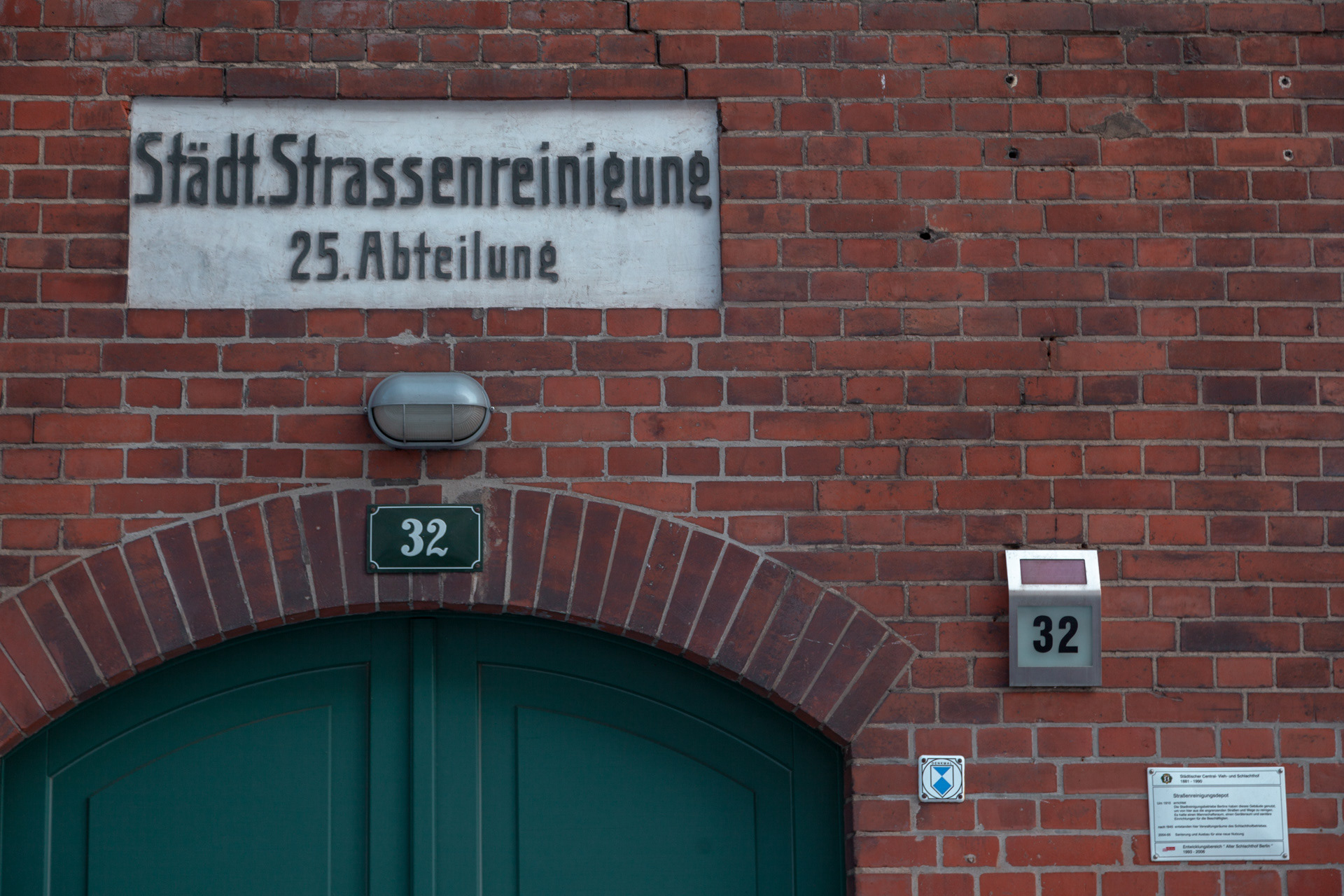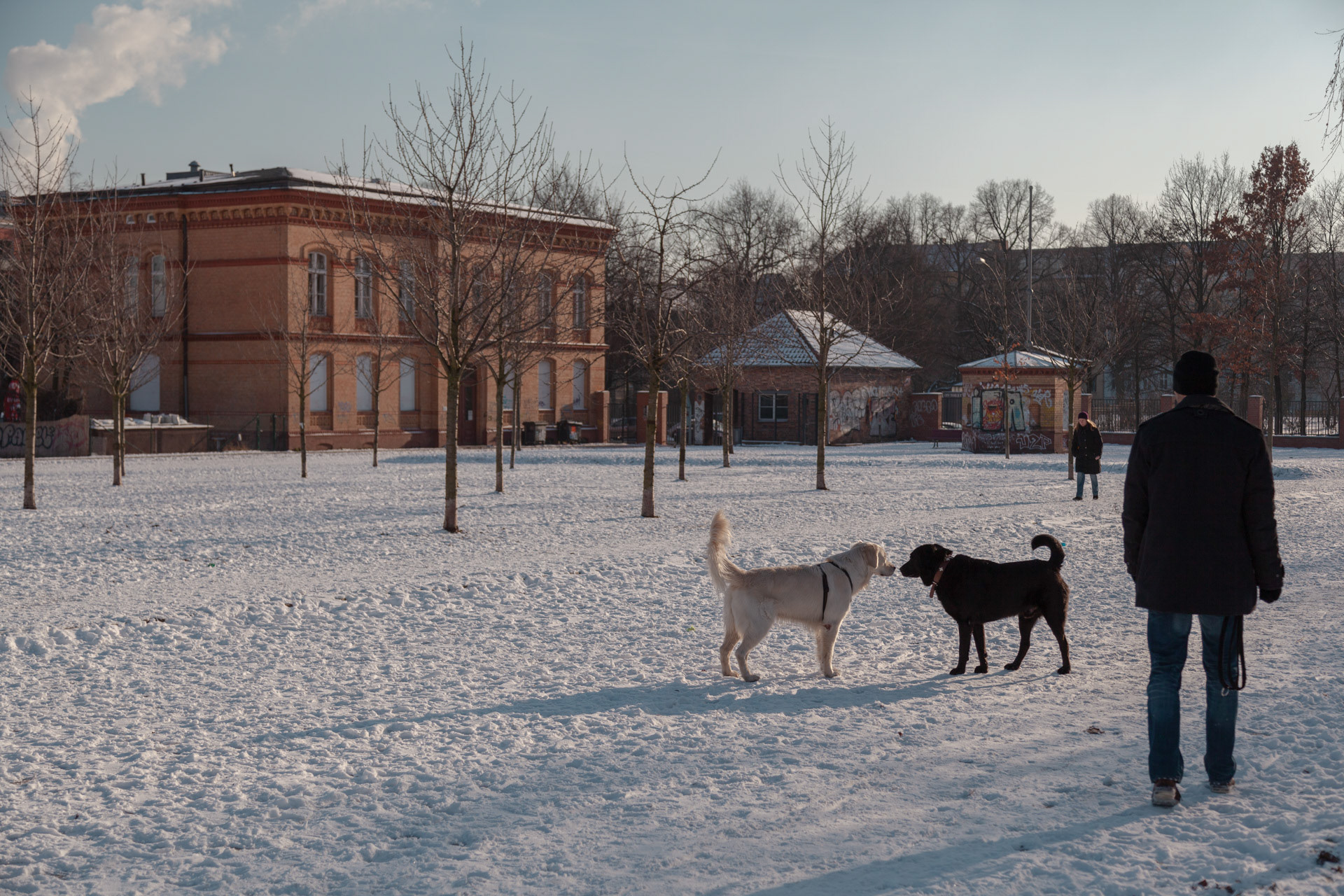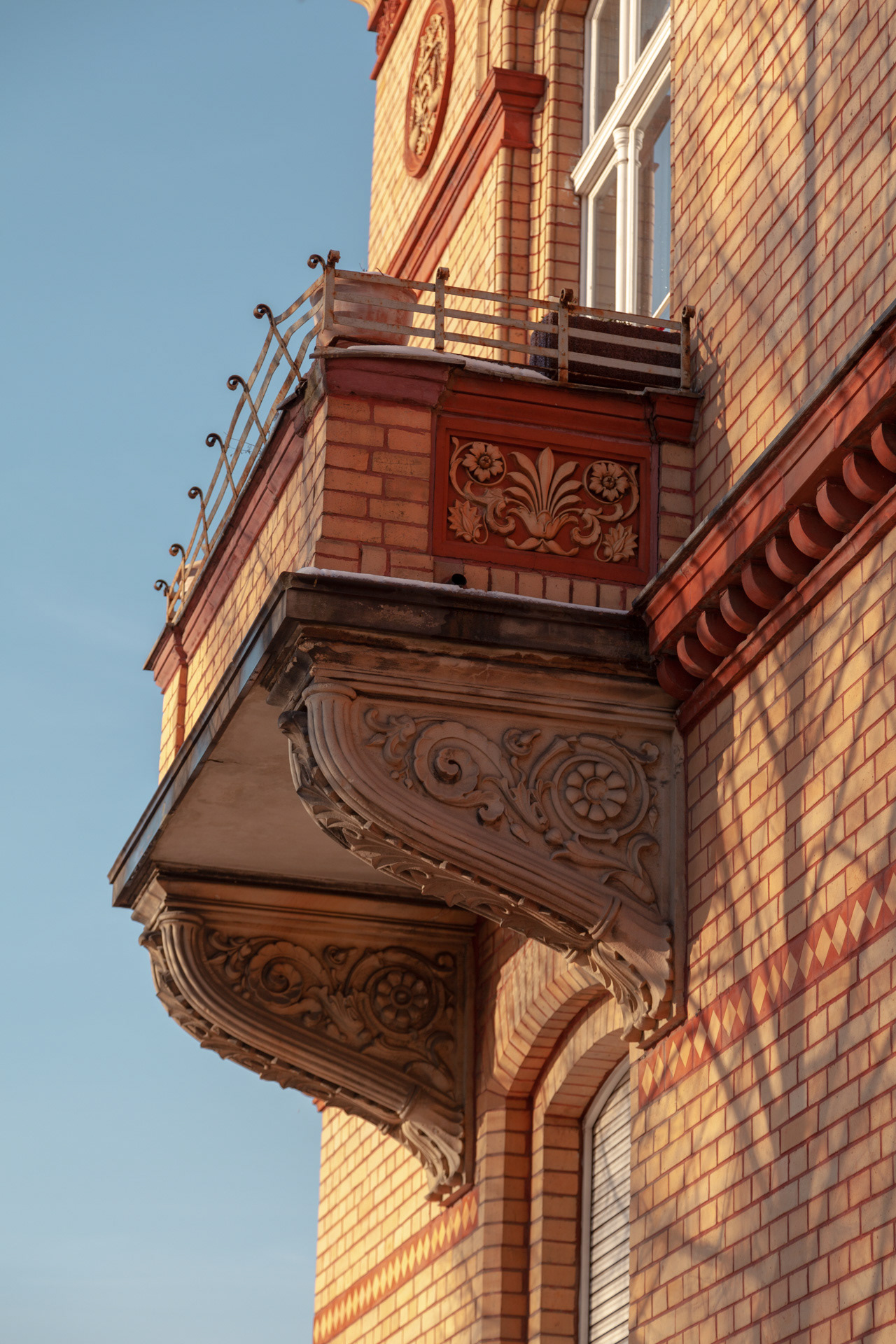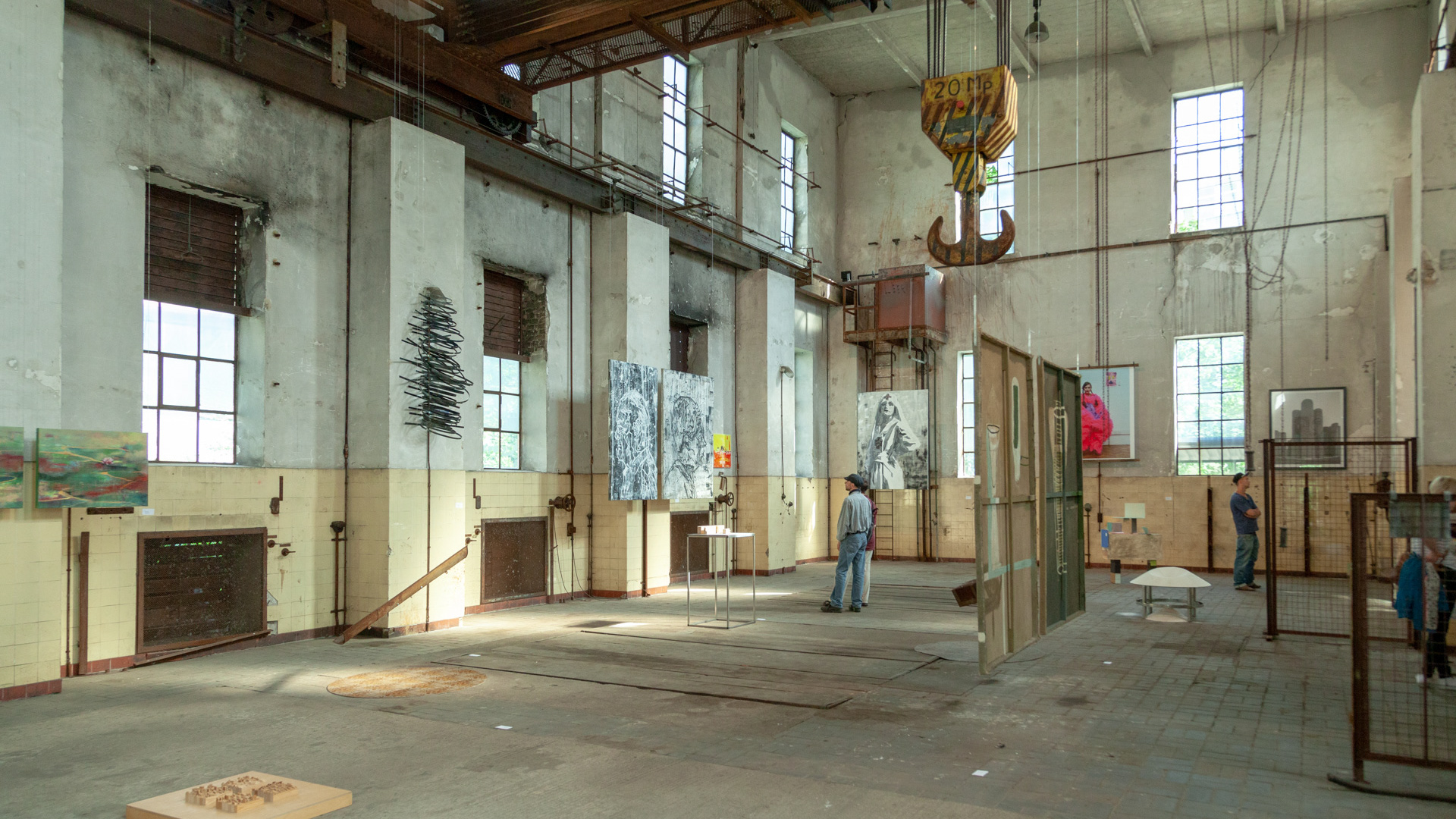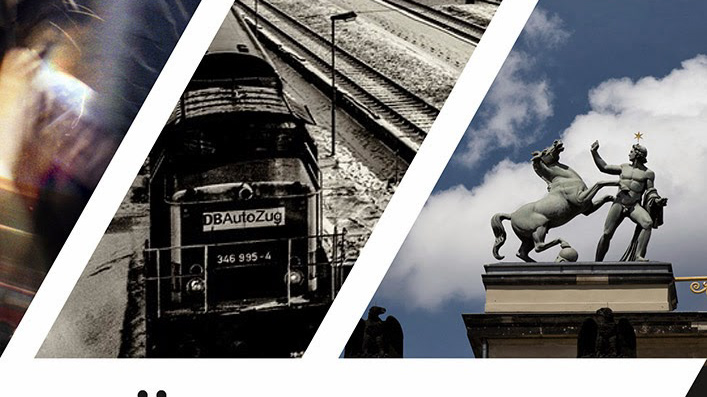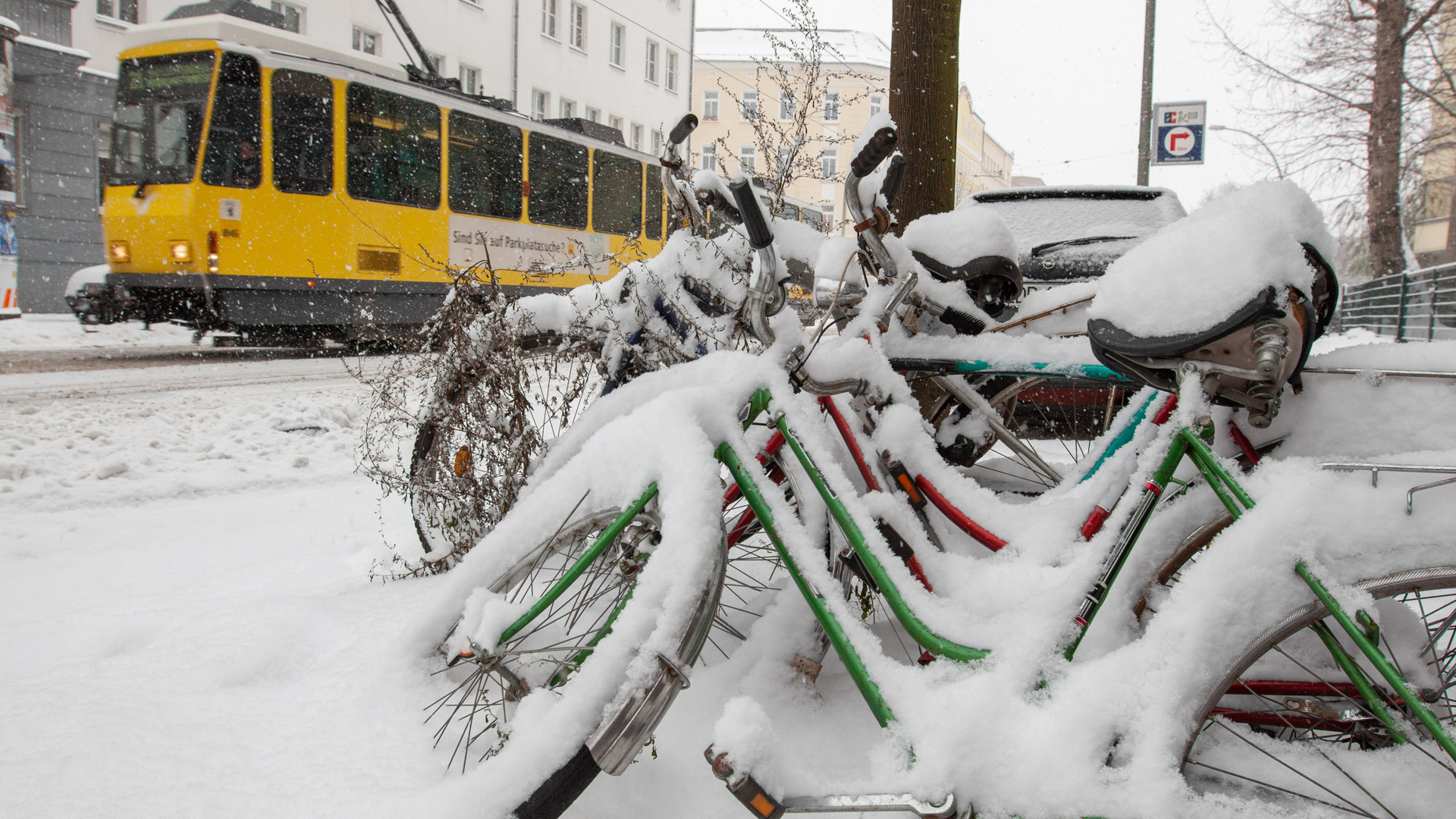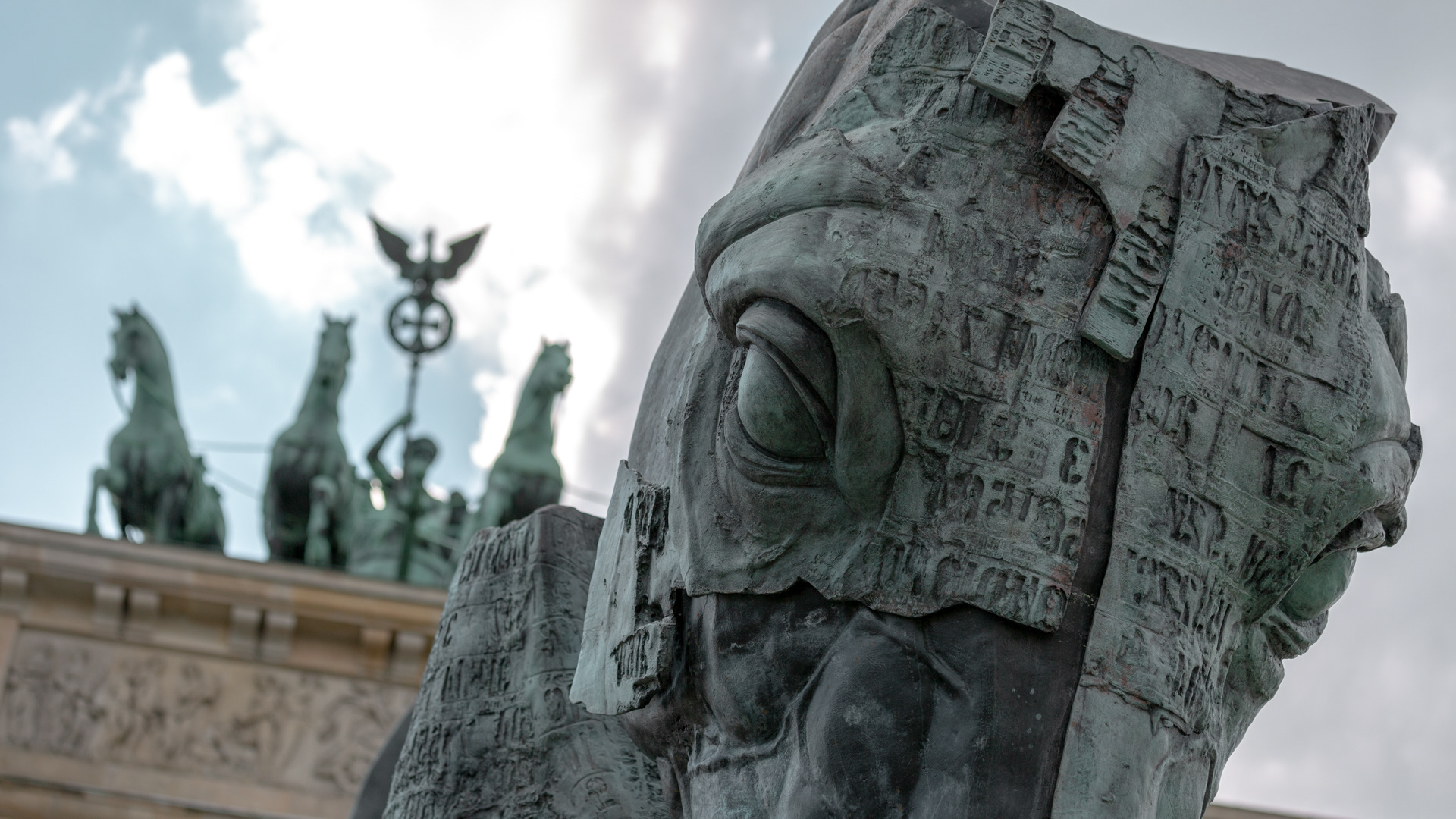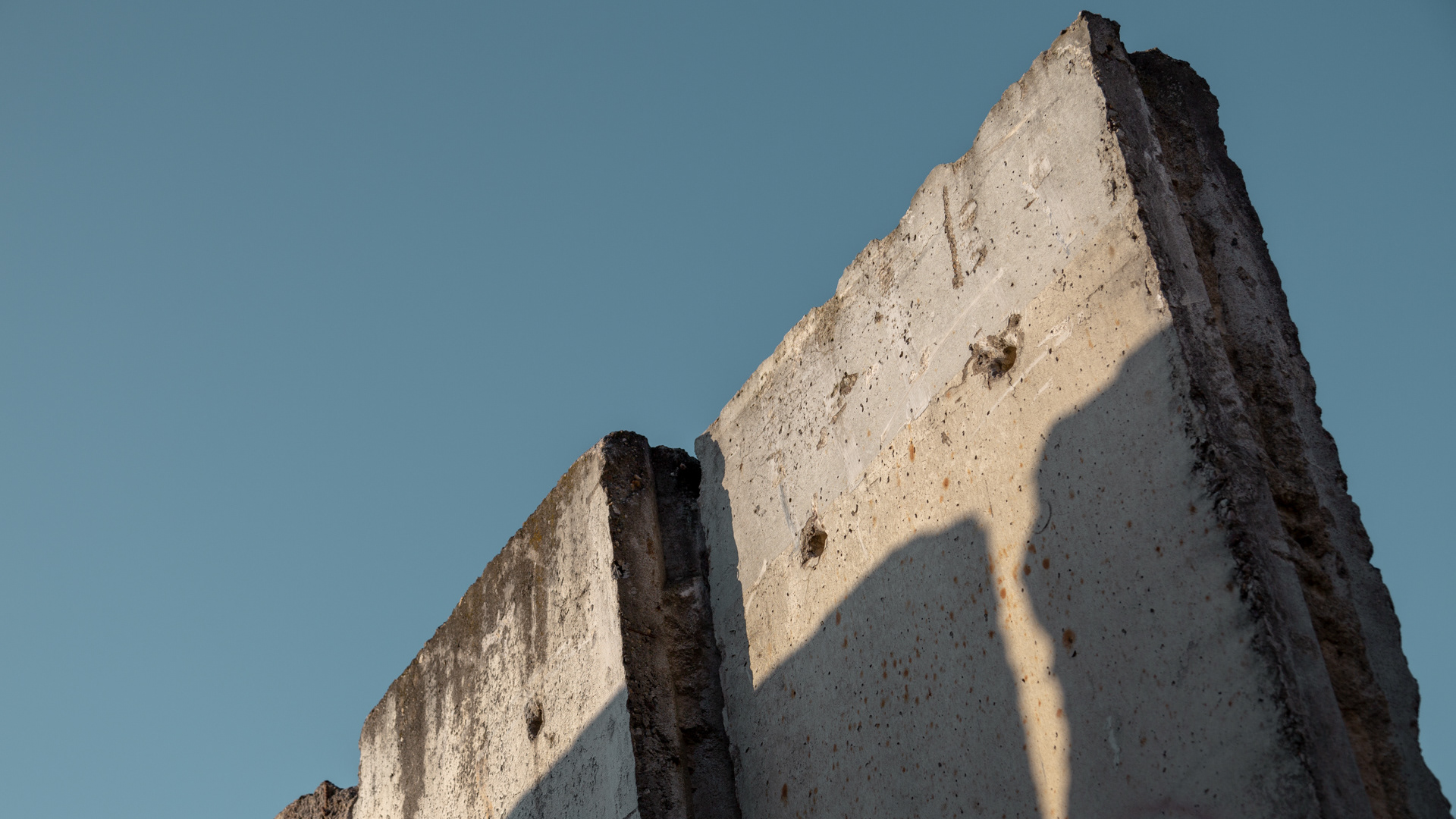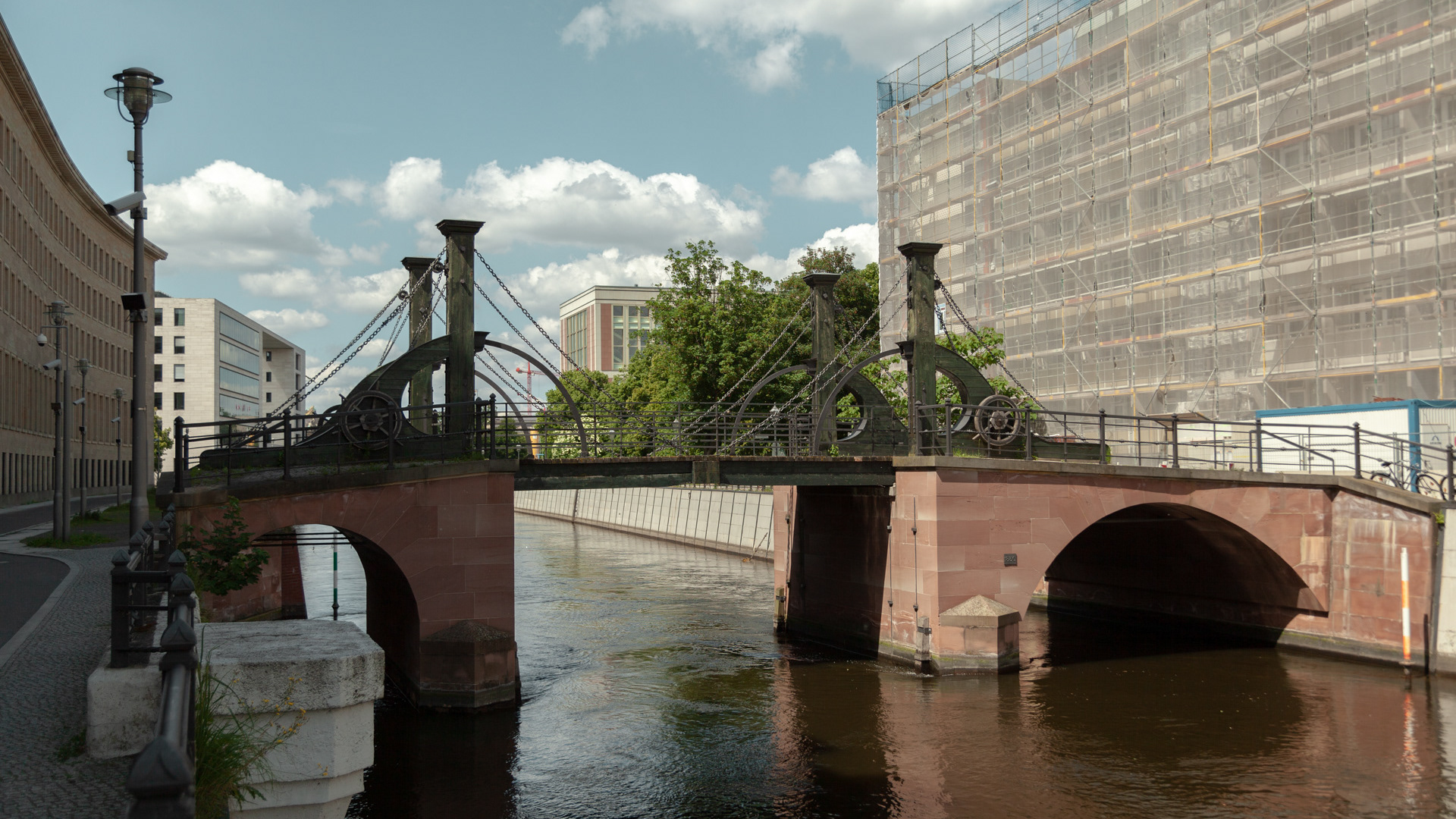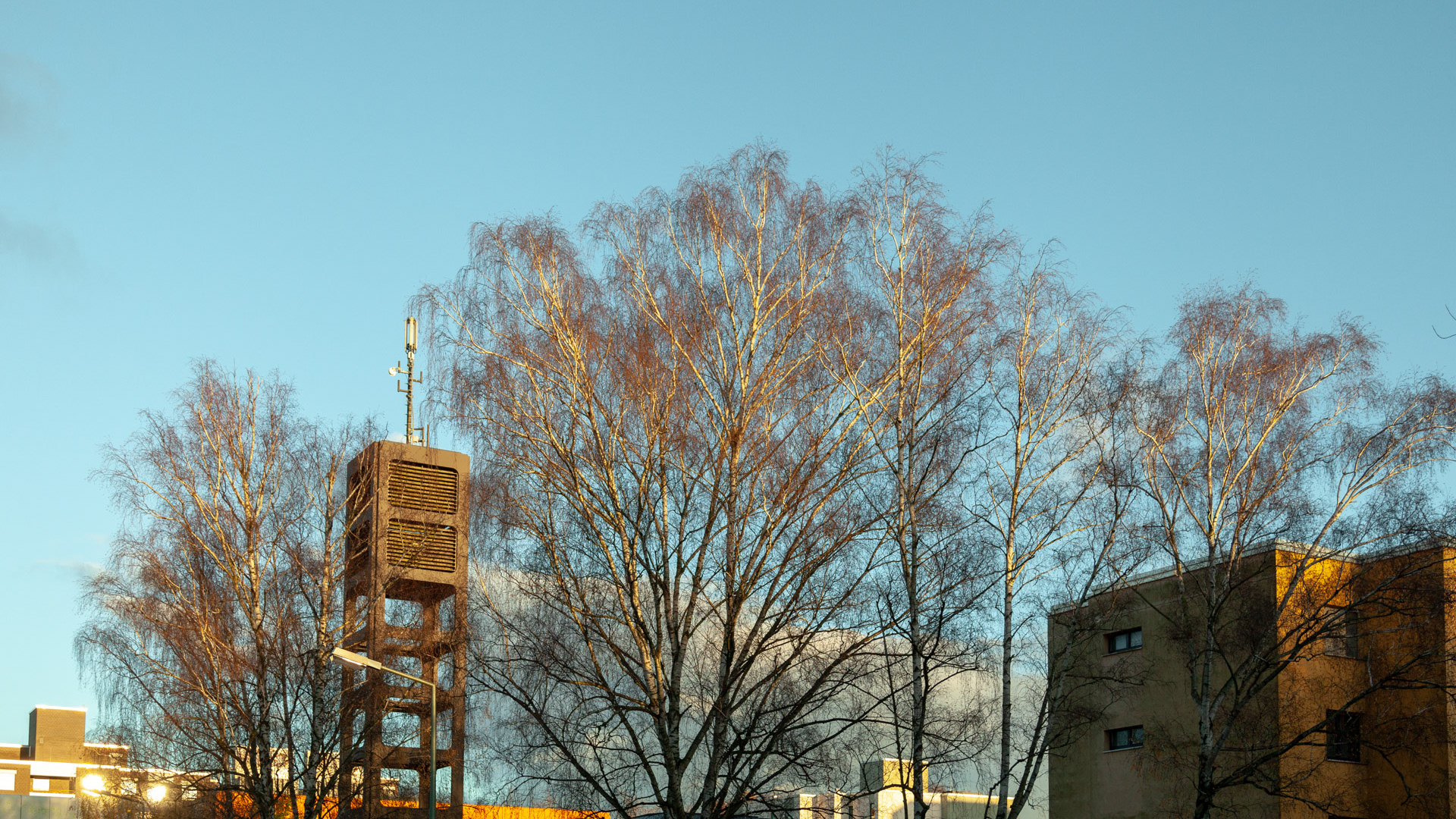This area is really huge and it was the central stockyard and slaughterhouse was of Berlin. Rudolf Virchow proposed in 1864 before the City Council to set up a run by the city of Berlin, a public slaughter house in order to ensure for the ever growing population of Berlin a better quality in the meat supply. It was later promoted the construction of municipal slaughterhouses and the subsequent ban on private slaughterhouses. The city had the legal responsibility to establish a public slaughter house and perform there hygienic controls. with slaughterhouses, markets, stalls and unloading station.
The area was divided into two parts: one for the slaughterhouse, the other with the stockyard.
There were the four major sales halls, numerous stables, two office buildings and the stock exchange building (Viehhofbörse), which was destroyed in 1945 during the war. In the east, there were open spaces, which left room for future expansion.
North joined to the tracks of the train station to the ring to take away the cattle, with more the 15km of railway.
During WWII the area was heavy damage caused (80% of the buildings on the old slaughterhouse were destroyed) by bombing towards the end of the war in 1945
Larger parts of the area were used until 1948 as spoils of war camp for the Red Army and large open spaces on the site were also used for temporary storage of debris.
In the DDR, the central stockyard and slaughterhouse became the leading operating of the meat processing industry in East Berlin. In 1958, it was converted into a state-owned enterprise Volkseigenen Betrieb (VEB) and then incorporated in 1963 in the meat-packing plant Fleischkombinat Berlin.
It was then first privatized in 1991, but the activities were taken over by the newly expanded meat market in in Moabit. The area was then for some years an industrial wasteland, then included in the plan for Berlin 2000 Summer Olympics, but then never realized.
After years is not restarted a plan of new houses, schools, supermarket, the biggest bike shop in Germany and groups of new houses. Sometimes the starting structure is shown in the facade.
The Fußgängerbrücke - Footbridge Storkower Straße was opened to allow pedestrians to cross all the area with a 420 meters long steel bridge, covered and glazed with opaque windows (to now let the people have a look inside the slaughter house). During the DDR time it was called Langer Jammer (Long Sorrow), Langes Elend (Long Misery) or Rue de Galopp.
The area was divided into two parts: one for the slaughterhouse, the other with the stockyard.
There were the four major sales halls, numerous stables, two office buildings and the stock exchange building (Viehhofbörse), which was destroyed in 1945 during the war. In the east, there were open spaces, which left room for future expansion.
North joined to the tracks of the train station to the ring to take away the cattle, with more the 15km of railway.
During WWII the area was heavy damage caused (80% of the buildings on the old slaughterhouse were destroyed) by bombing towards the end of the war in 1945
Larger parts of the area were used until 1948 as spoils of war camp for the Red Army and large open spaces on the site were also used for temporary storage of debris.
In the DDR, the central stockyard and slaughterhouse became the leading operating of the meat processing industry in East Berlin. In 1958, it was converted into a state-owned enterprise Volkseigenen Betrieb (VEB) and then incorporated in 1963 in the meat-packing plant Fleischkombinat Berlin.
It was then first privatized in 1991, but the activities were taken over by the newly expanded meat market in in Moabit. The area was then for some years an industrial wasteland, then included in the plan for Berlin 2000 Summer Olympics, but then never realized.
After years is not restarted a plan of new houses, schools, supermarket, the biggest bike shop in Germany and groups of new houses. Sometimes the starting structure is shown in the facade.
The Fußgängerbrücke - Footbridge Storkower Straße was opened to allow pedestrians to cross all the area with a 420 meters long steel bridge, covered and glazed with opaque windows (to now let the people have a look inside the slaughter house). During the DDR time it was called Langer Jammer (Long Sorrow), Langes Elend (Long Misery) or Rue de Galopp.
